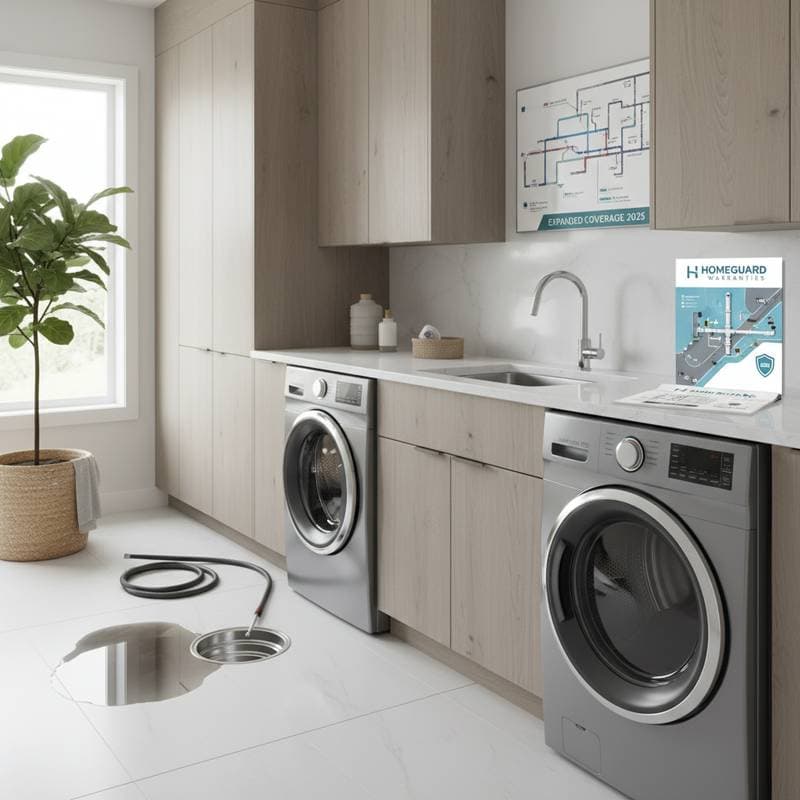Home Warranty vs. Homeowners Insurance: Key Differences in 2025
Homeownership offers stability yet demands vigilance to preserve value. Two primary safeguards, home warranties and homeowners insurance, often puzzle new owners. Each addresses unique risks, and pairing them fortifies your investment against both catastrophes and routine failures.
What Homeowners Insurance Protects
Homeowners insurance shields your dwelling, contents, and legal responsibilities from abrupt perils. Policies respond to events such as fires, vandalism, or wind damage by funding restoration. This coverage emphasizes recovery from unexpected incidents rather than gradual deterioration.
Standard policies include three core components:
- Dwelling protection for the home's structure, encompassing walls, roof, and integrated utilities.
- Contents coverage for personal items like furnishings, devices, and attire.
- Liability safeguards against injuries on your premises or damage you cause to others' assets.
Mortgage providers typically mandate this insurance to mitigate lender risks. As insurance professional Carla Jensen noted in a Forbes discussion, one severe incident without coverage could impose substantial financial strain, underscoring its role in maintaining economic resilience.
What a Home Warranty Covers
A home warranty functions as a service agreement that offsets expenses for repairing or replacing essential systems and appliances due to typical aging. Unlike insurance, it targets predictable failures from prolonged operation. Homeowners gain access to vetted technicians through the provider, minimizing direct involvement in fixes.
Common inclusions encompass:
- Heating, ventilation, and air conditioning units
- Pipes, wiring, and electrical frameworks
- Kitchen essentials like refrigerators, ranges, and dishwashers
- Water heating units and laundry machines
Upon a breakdown, submit a claim online or by phone. Pay a modest service charge, typically $75 to $125, and the provider coordinates the response. Contracts outline payout caps and exclusions to set clear expectations.
Fundamental Distinctions in Coverage Triggers
Coverage activation defines the primary divide. Homeowners insurance activates for abrupt, external harms like hail or burglary. Home warranties engage for internal malfunctions arising from regular wear.
Consider a scenario: A storm tears shingles from your roof, prompting an insurance claim for structural repairs. Later, if the heating system falters from component fatigue, the warranty handles diagnostics and parts. This synergy addresses diverse threats without overlap.
Analyzing Costs and Overall Benefits
Homeowners insurance rates fluctuate with home size, regional hazards, and selected limits, averaging $1,200 to $2,500 annually. Factors such as coastal exposure or urban density influence premiums. Deductibles, often $1,000 or more, apply to claims.
Home warranties operate on yearly contracts costing $400 to $800, supplemented by per-incident fees. These plans yield savings on high-ticket items; replacing an air conditioner alone might exceed $5,000 without assistance. Evaluate insurance for disaster resilience and warranties for operational reliability to align with your priorities.
Scenarios for Applying Each Coverage
Secure homeowners insurance as a foundational requirement for any property owner, whether buying or renting, to cover assets and risks. Opt for a home warranty in targeted situations:
- Aging residences with components nearing end-of-life
- New purchasers navigating unforeseen maintenance burdens
- Properties in escrow to reassure prospective buyers
- Time-strapped residents seeking streamlined repair coordination
Community forums like Reddit's r/HomeImprovement reveal practical insights. One participant shared, "Our furnace failed right after we moved in. The warranty covered everything except the service fee, saving us almost three thousand dollars." Such accounts illustrate tangible relief from warranty support.
Common Exclusions to Anticipate
Neither option covers every contingency, so review terms to sidestep claim denials. Homeowners insurance omits:
- Routine upkeep tasks
- Appliance breakdowns from usage
- Water or seismic events absent add-ons
Home warranties exclude:
- Conditions present at policy inception
- Faulty setups or user errors
- Building integrity or aesthetic fixes
Request a detailed outline from providers detailing caps, processes, and fees. This preparation equips you to navigate filings effectively.
Integrating Coverage for Comprehensive Defense
Layering homeowners insurance with a home warranty builds robust safeguards. Insurance fortifies against existential threats, while warranties sustain daily functionality. This duo curbs expenses across scales, from minor tweaks to major overhauls.
Picture a dishwasher overflow: The warranty addresses the unit's repair, and insurance compensates for ensuing floor damage. Divided responsibilities streamline resolution and limit your exposure. As one Quora expert observed, "Insurance keeps you from losing your home. A warranty keeps your home running smoothly."
Selecting Optimal Providers
Narrow choices by assessing:
- Scope specifics: Verify inclusions for systems, devices, and perils; note any restrictions on high-end items.
- Service reliability: Consult ratings from Google, Yelp, or the Better Business Bureau for dispatch speed and resolution rates.
- Filing efficiency: Prioritize providers with digital portals and rapid contractor assignments.
- Adaptability: Seek add-ons for features like pools, wells, or connected tech to match your setup.
- Expense equilibrium: Weigh upfront costs against future obligations; avoid low initial fees masking steep claims charges.
Seeking Expert Input
Beyond self-research, consult specialists for tailored recommendations. Agents evaluate site-specific elements like climate and structure age. Real estate advisors integrate coverage into transactions.
Pre-purchase inspections uncover vulnerabilities, signaling warranty needs. For modern builds under manufacturer guarantees, emphasize insurance enhancements. Property consultant John Ramirez advised in a LinkedIn forum, "The smartest homeowners treat coverage like maintenance. They review it yearly, update it with new home improvements, and make sure both policies complement each other."
Steps to Secure Balanced Protection
Assemble your strategy by auditing home attributes: age, utilities, and locale vulnerabilities. Strengthen insurance for hazard-prone areas; incorporate warranties for mature infrastructure or cost predictability. Annual reviews adapt to changes like renovations.
This deliberate framework minimizes disruptions, allowing focus on home enjoyment over fiscal worries. Proactive choices transform potential setbacks into manageable events.





